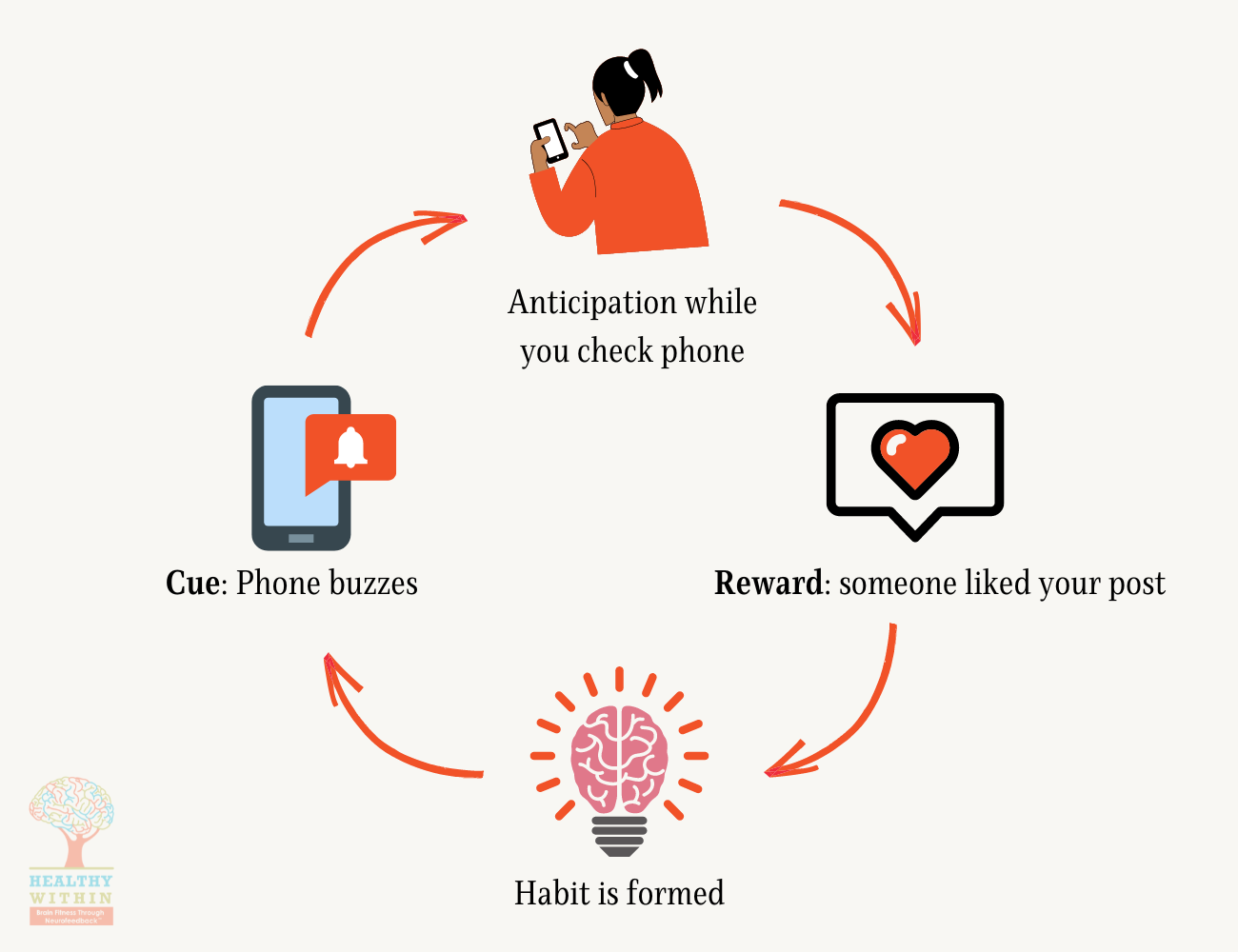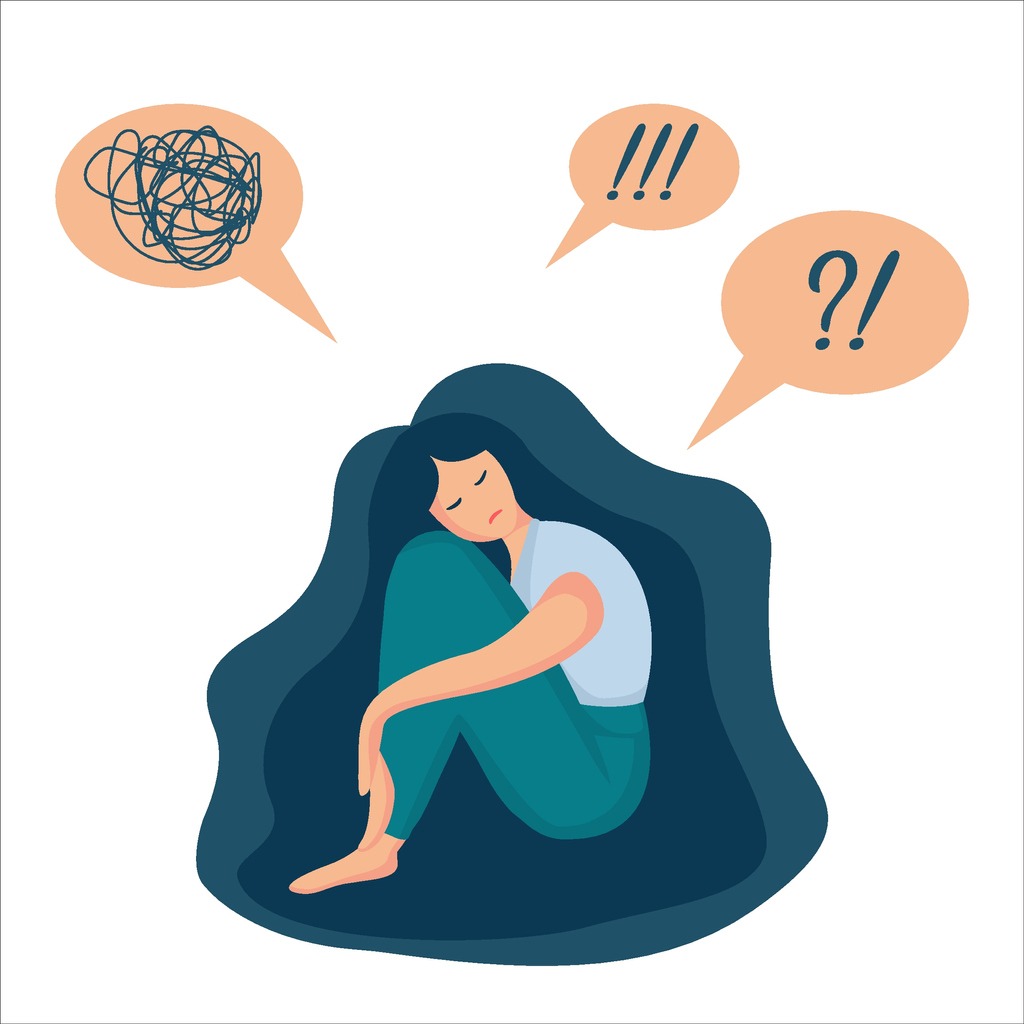It is no secret there has been an increase in Smartphone Addictions and Social Media Addictions. Teens everywhere have been severely affected with society’s new reliance on technology and the constant amount of content being thrown in their direction.
Adolescence is a critical time of growth for the brain. The brain is the last organ in the body to mature and this typically takes about two decades and a half to complete. It is not until your mid-20s that your brain is fully developed which is why adolescence is so critical. The brain is creating those connections up until your mid-20s, which is why it is so influential during this time.
Okay, let’s break this down. Basically, our brains are developing and making connections up until our mid-20s. According to Frances Jensen, MD, and Professor at the University of Pennsylvania, children and teens are wired to learn faster. During this time, our brain is known for its plasticity. There are more synapses occurring which allow for the adolescent brain to respond and adapt more quickly to its environment. A study done in 2018 found that the neural systems are still developing and undergoing these significant changes, they may contribute to the sensitivity to peer influence, online rejection, acceptance, and emotion-loaded interactions in this environment.
Statistics
- By 2015, 92% of teens and young adults owned a smartphone. But, as smartphone use increased, so did feelings of depression.
- A 2017 study of 8th to 12th graders found that high levels of depressive symptoms increased by 33% between 2010 and 2015. The suicide rate for girls in this age group increased by 65%.
- Child suicide rates increased by up to 150%, and self-harm by girls ages 10 to 14 nearly tripled. These patterns point to social media.
- Eighth-graders who spend over 10 hours on social media per week are 56% more likely to report being unhappy than those who spend less time on social media.
- Spending more than 3 hours on social media per day puts adolescents at a higher risk for mental health problems.
- 59% of US teens experienced cyberbullying or online harassment. 90% say they think this harassment is a problem that affects other people their age. 63% say that it’s a major problem.
Frontal Lobe
As stated above, the brain is the last organ in the body to mature. Myelination in the frontal cortex of the brain is taking place. The last place to make a connection in the brain is the frontal lobe. 
The frontal lobe is responsible for judgment, impulse control, decision making, and other cognitive functions. This myelination is helping inhibit those impulses and create connections that will follow the “normal” processes that need to take place.
Teen brains are impressional. As these processes are taking place, it is easy to begin strengthening the wrong synapses. Addiction is a form of synaptic plasticity and once a teenager begins to experience that rush of dopamine from social media and their smartphones, these substances can affect the processes. The teen brain that is adapting to the environment will begin to adapt to the substances (social media and smartphones) which in turn, can create an addiction.
Did you know that your brain chemistry is changing because of the usage of your smartphone?
Reward Pathway… Addiction?
Recent studies have found that the reward pathways are linked to social media notifications. The reward pathway typically develops earlier than the more rational regions of the brain that are important for making decisions. This leads to the reward pathway essentially taking over the decision-making process, meaning that teenagers will make their decisions based on impulse and pleasure as opposed to rational and informed decisions.
As a result, teen brains are more prone to addictions and social media is now known to have an addictive effect that can lead to an addiction.
Here is an example:

Let’s just say a picture was just posted on social media. Now, comes the game of waiting for people to see the post and begin to like what you just spent hours editing. Bing! Notification coming in that someone just liked the post. Your brain is receiving a reward for getting a like. When that happens, dopamine is activated and released.
That rush of dopamine is sent along the reward pathways causing the individual to feel that pleasure. Now, remember that the teen brain is experiencing that plasticity so that feeling of pleasure is allowing for positive reinforcement of social media.
Dopamine is being produced at a greater level than in the adult brain. Research has found that constant scrolling on your phone will actually increase dopamine dramatically. So basically, a smartphone and social media can enable you to get excited and happy, releasing those chemicals which in turn makes you want to keep doing what you are doing to feel them again.
However, it is important to note that even though Dopamine is a feel-good chemical – too much of it can cause things like aggression, impulsivity, ADHD, anxiety, depression, and can even lead to psychosis.
Mental Health (or as we like to call it… BRAIN Health)
In addition, research has been able to establish a link between social media and its overall effects on mental health. Its noted effects are on self-esteem, depression, anxiety, sleep, communication skills, envy, stress, and much more.
Now you may be thinking, how can social media have these noted effects on teens. One answer: idealism. Idealism is defined as “the practice of forming or pursuing ideals, especially unrealistically”, note the unrealistic part. Social media becomes this sort of conduit that is used to create an image of oneself to show off to others. Posting only our best pictures, showing off our newest expensive purchase, etc. Social media becomes an emotional investment for teens (and let’s be real… some adults).
There is constant stress on having the perfect “feed” and showing your best pictures. This can cause much chaos to the developing teen brain. They begin to worry about what others might think of them based on their posts, how many comments they get on their posts, and the number of likes, which in turn can be a huge stressor and affect their mental and emotional health.
Another factor that comes in is Envy. As stated above, most people will post their best pictures on social media, or rather the highlights of their life. As a result, another person may portray this perfect life online, which can lead the teen brain to start comparing their life to others. They begin to think everyone is better off or is happier. This can often feed into depression, loneliness, anger, and a variety of other brain health conditions. Social media demands perfection from everyone who uses it, which can be so detrimental to our teens and their developing brains.
Check out our Instagram post on “5 Ways Social Media Affects Teens Mental Health”.
Neurofeedback
So why choose Neurofeedback for your teen? Neurofeedback can regulate the brain at the primitive early stages.
Teen brains tend to respond very well to Neurofeedback for the very same reason we state above. The brain is the last organ in the body to mature and myelination in the frontal cortex is still being formed. Neurofeedback will essentially make the brain’s electrical impulses more efficient, especially during the “pruning” phases. During treatment, they receive “nudges” to the brain. Exposure to different brainwave frequencies allows for a reaction.
Due to the brain still being in development, the small nudges they are receiving from Neurofeedback can make for long-lasting effects.
More information can be found in Dr. Kakaiya’s book “Healthy Within: Brain Fitness Through Neurofeedback”.
What can Parents do?
Let’s begin teaching teen brains how to build resilience, navigate conflict resolution, and the power of emotional expression. Here are also a few extra tips:
- Reduce screen time
- Reducing social media use to even 30 minutes per day results in significantly lower levels of:
- Anxiety
- Depression
- Loneliness
- Sleep problems
- Fear of missing out (FOMO)
- Reducing social media use to even 30 minutes per day results in significantly lower levels of:
- More family time (without electronic devices)
- The power of Grit
- Positive self-talk (how they can be kind to themselves and develop self-compassion)
- Teach them it is okay to be vulnerable
Social media is here to stay. Let’s teach teen brains to have some coping skills in their toolbelts so the demands and stresses of Social Media do not affect their brain health.
At Healthy Within, we do not diagnose or medicate our patients but instead, curate individualized treatments for our patients.
Contact us for more information about how we can help you get your mind back to functioning at its calm, confident self.

References
https://neuroscience.stanford.edu/news/just-how-bad-kids-smartphone-addiction
https://www.parent.com/blogs/conversations/smartphone-addiction-affecting-teens-brains-not-good
https://sova.pitt.edu/social-media-guide-how-does-social-media-affect-the-adolescent-brain
https://ourteenbrains.org/blogs/the-effect-of-social-media-on-the-teenage-brain/
https://journals.plos.org/plosone/article?id=10.1371/journal.pone.0139897
https://www.addictioncenter.com/drugs/social-media-addiction/
https://www.nature.com/articles/s41467-018-03126-x
https://etactics.com/blog/social-media-and-mental-health-statistics
https://journals.sagepub.com/doi/full/10.1177/2167702617723376
https://www.the-sun.com/news/1487147/social-media-suicides-self-harm-netflix-social-dilemma/
https://www.center4research.org/social-media-affects-mental-health/

